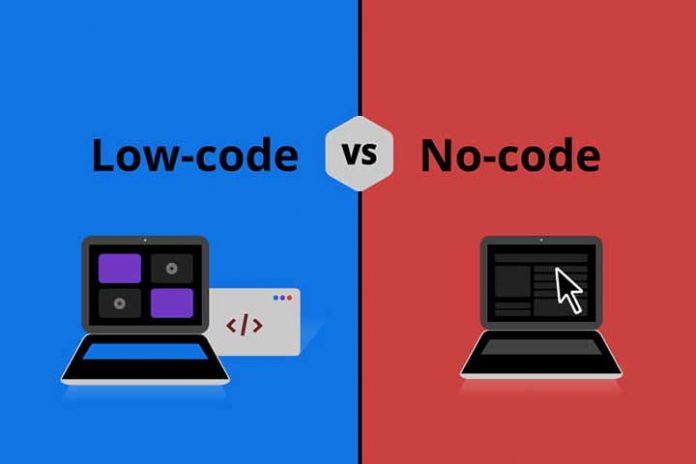In our low-code guide , we have already given you an introduction and a definition of low-code and shown the advantages for companies. You will also find some application examples there that present the functions, components and use. We only touched on the no-code technology briefly. This post aims to change that.
In addition to a definition of no-code, this article focuses on the differences and similarities between low-code and no-code software and highlights the potential and possible disadvantages.
Low-code and no-code, what is it?
Our low-code guide already offers a detailed overview, but here is a brief introduction as a reminder:
Both low-code and no-code technologies enable private individuals or company employees to develop digital applications with almost or no programming effort.
Based on building with Lego, low-code and no-code is often referred to as software development or use according to the modular system. The building blocks or elements are selected by the user from a visual on-screen library and integrated into the application.
By individually assembling prefabricated components using drag-and-drop, a wide variety of application solutions can be configured. This results in solutions tailored to the individual requirements for all sectors and content-related requirements.
In this way, a significant contribution can be made to simplifying the development of digital application solutions, since users without an IT background can also develop and use software.
A comparison of low-code and no-code
As shown, the development approaches – low-code and no-code – promise companies or private individuals the development and use of digital applications with little or no programming effort.
In this context, the first difference between low- and no-code scenarios arises . While low-code software requires little programming effort, no-code applications do not require any programming effort.
Advantages of no-code over low-code
This difference also goes directly with an advantage in favor of no-code technology. Even if low-code applications are associated with little coding effort (on average it is assumed to be about 20%), there is just this effort.
For companies in particular, there is a serious difference in terms of time, money and human resources.
Although the coding effort is low, this means that the IT specialists of a company or external IT specialists still have to be involved and the application cannot be configured entirely by non-specialist employees.
No-code scenarios, on the other hand, do not require any programming at all. This means that the entire code is pre-programmed and can be assembled into an individual solution using drag-and-drop. This completely eliminates the need for manual code creation.
This can result in a decisive competitive advantage , especially for SMEs . If employees themselves recognize the need for software during the work process , they can also define individual development requirements. These can then flow directly into the independent software development by these employees . Users can then independently evaluate the use and derive a need for adjustment. They then make the adjustment themselves, for example .
In addition to the significant savings in time, human and financial resources that result from this, the independent implementation of an individually required project can have a motivating effect on employees, as they are shown trust and appreciation.
These developers without an IT background, the citizen developers , can also respond to changing requirements or customer requests relatively quickly and easily and integrate them into the software. The constant adaptation and further development are thus simplified.
Possible disadvantages of no-code compared to low-code
For less complex applications, no-code development offers the advantages described. For technically more demanding solutions, no-code scenarios are partially attested to be weak.
By using the ready-made building blocks, no-code developments can reach the limits of differentiation. The positive effect of easy access to the ready-made elements turns out to be a disadvantage when greater scalability is required.
Sometimes, for example, integrating corporate design is a hurdle. It can also be complicated to include user properties individually.
This can be counteracted by the option of programming in low-code scenarios.
Another problem with no-code applications or no-code development platforms (no-code development platforms) is their manufacturer specificity . That is, they only offer limited functionality that cannot be expanded.
Also Read: What Is Python?

